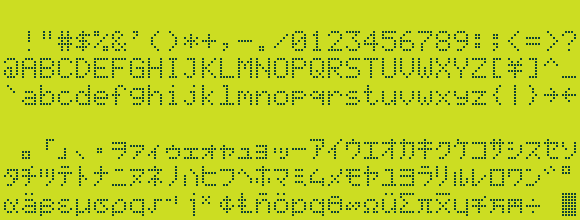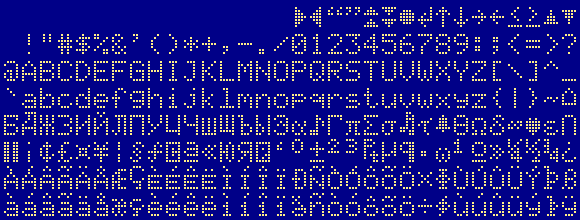https://github.com/jazz-soft/char-lcd
Character LCD display emulator
https://github.com/jazz-soft/char-lcd
character-lcd hd44780 lcd
Last synced: 2 months ago
JSON representation
Character LCD display emulator
- Host: GitHub
- URL: https://github.com/jazz-soft/char-lcd
- Owner: jazz-soft
- Created: 2018-10-26T05:49:15.000Z (over 6 years ago)
- Default Branch: master
- Last Pushed: 2025-01-05T04:19:14.000Z (6 months ago)
- Last Synced: 2025-05-01T00:46:32.399Z (2 months ago)
- Topics: character-lcd, hd44780, lcd
- Language: JavaScript
- Homepage:
- Size: 48.8 KB
- Stars: 32
- Watchers: 2
- Forks: 3
- Open Issues: 1
-
Metadata Files:
- Readme: README.md
Awesome Lists containing this project
README
# char-lcd
[](https://www.npmjs.com/package/char-lcd)
## Character LCD display emulator
Emulate **Hitachi HD44780** and compatible devices in HTML
##### HD44780-A00 (Japanese standard font)

##### HD44780-A02 (European standard font)

## Install
`npm install char-lcd --save`
or `yarn add char-lcd`
or clone the whole project from [**GitHub**](https://github.com/jazz-soft/char-lcd)
## Usage
##### Web Component (Polymer)
https://github.com/jazz-soft/polymer-char-lcd
##### Plain HTML
```html
//...
```
##### CDN (jsdelivr)
```html
//...
```
##### CDN (unpkg)
```html
//...
```
##### CommonJS
```js
var CharLCD = require('char-lcd');
//...
```
##### TypeScript / ES6
```js
import { CharLCD } from 'char-lcd';
//...
```
##### AMD
```js
require(['char-lcd'], function(CharLCD) {
// ...
});
```
## Example
```html
var lcd = new CharLCD({ at: 'lcd', rows: 4, cols: 16, rom: 'eu' });
// Example 1: Display a single custom character at row 0, column 0
// To set a custom character, use String.fromCharCode to map a character byte (16-255).
// In this case, use character code 16, which is the first non-blank character in the set.
lcd.char(0, 0, String.fromCharCode(16)); // Set the custom character at row 0, column 0
// Example 2: Display another custom character at row 1, column 0
lcd.char(1, 0, String.fromCharCode(17)); // Set another custom character at row 1, column 0
// Example 3: Display a string with mapped Unicode characters
// The lcd.text() function will automatically map Unicode characters to the internal character set.
lcd.text(2, 1, "Hello LCD!");
lcd.text(3, 0, "ЁЛКИ-ПАЛКИ!");
```
## API
##### constructor
`var lcd = new CharLCD(params);`
`params` is an object with the following keys:
- `at`: a DOM element in which to place the object, or its `id`;
default: at the bottom of the page;
- `rom`: `jp` (default) for Japanese standard font, or `eu` for European standard font.
- `rows`: number of rows;
default: 2;
- `cols`: number of columns;
default: 16;
- `pix`: pixel size; default: 3;
- `brk`: space between pixel; default: 1;
- `off`: character pixel off color (background); default: #cd2;
- `on`: character pixel on color; default: #143;
- `transitionDuration`: character pixel transition duration; default: 100ms;
Unlike the real hardware where only certain combinations of `rows`/`cols` exist, there are no restrictions in the simulator;
##### char(r, c, h)
`lcd.char(r, c, h);` - set the character at row `r`, column `c` to byte `h`.
##### text(r, c, s)
`lcd.text(r, c, s);` - print string `s` at row `r`, column `c`.
This function treats `\n` as new line and maps UNICODE characters to the internal character set.
##### font(n, data)
`lcd.font(n, data);` - define the pixels for the `n`-th character; `data` is an array of up to 10 bytes.
In real hardware, only first 8 characters can be changed, but there is no such limitation in the simulator.
##### clear()
`lcd.clear();` - clear all characters in LCD.